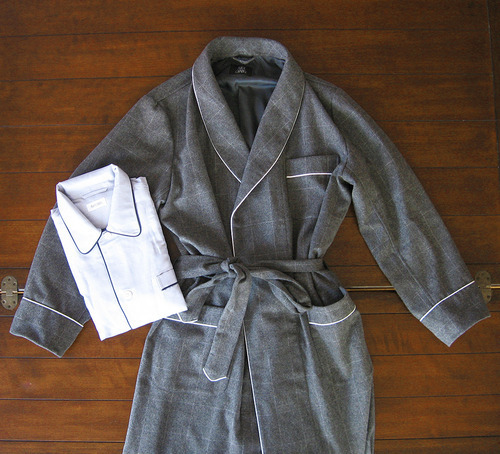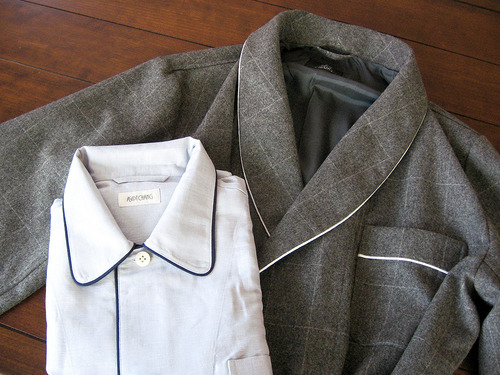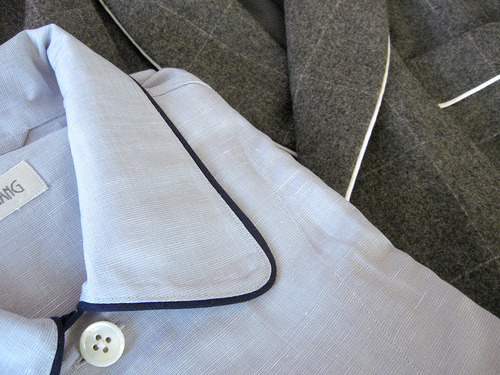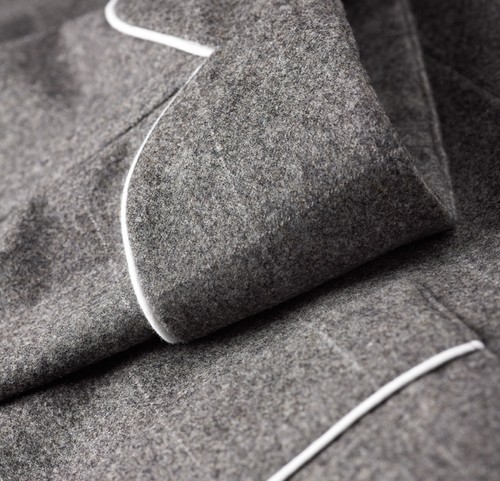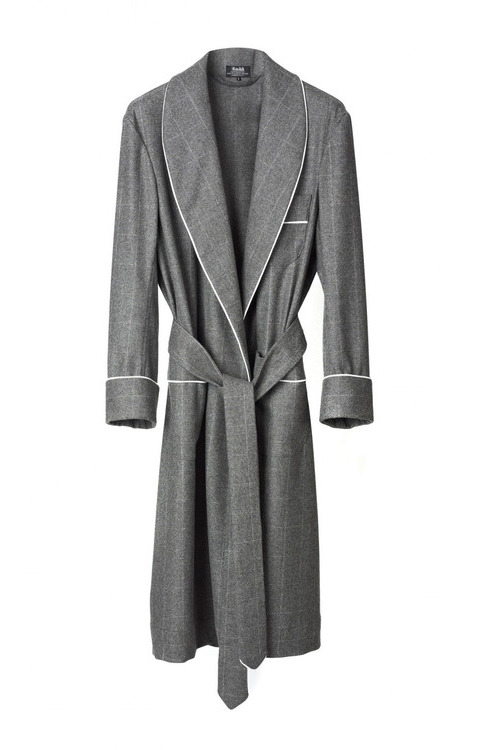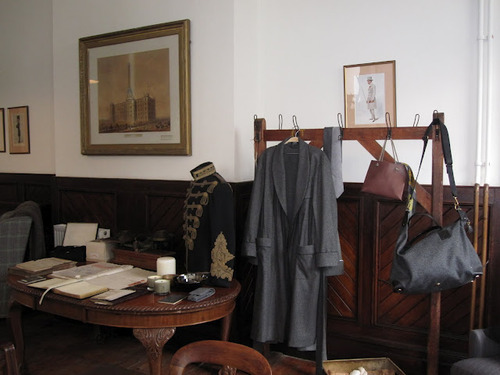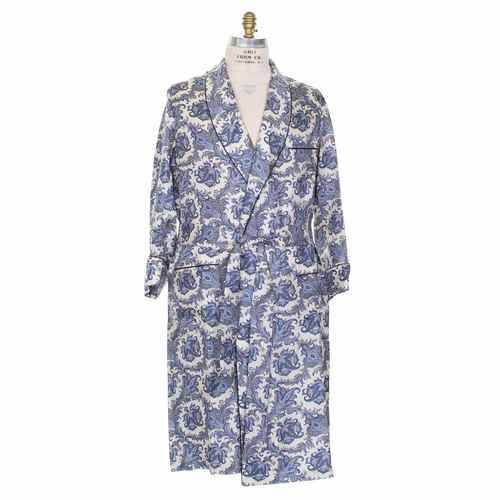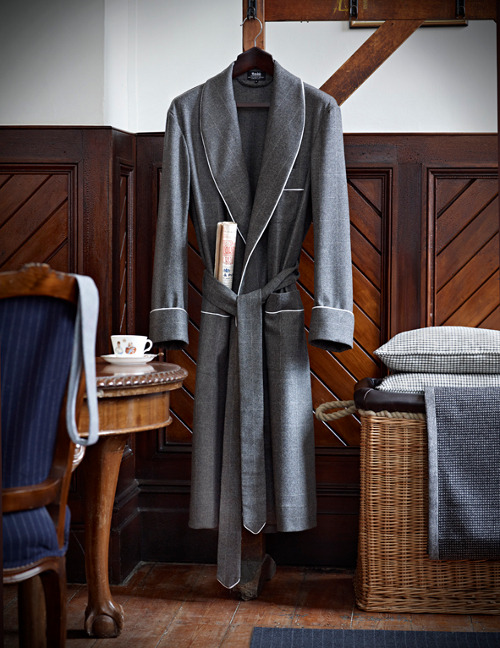
Of all the styles of classic men’s clothes to have slowly disappeared over the years, the dressing gown might be the easiest to pull off (both figuratively and literally). They’ve gone by the wayside, unfortunately, like most things involving tailoring. Replacing gowns are sweatpants and t-shirts, which I can confirm are not nearly as comfortable. If made well, a gown and a pair of pajamas are just about the best clothes you can wear at home.
I received my first gown last month. Made by Ascot Chang and modeled after something I saw at The Merchant Fox, it features a shawl collar, deep patch pockets, and contrast piping. The mid-grey windowpane flannel comes in at a 13/ 14oz weight, which feels perfect for this kind of thing – heavy enough to drape well, but not so heavy to feel overly warm. Getting out of my bedcovers in the morning has never felt better.
Although dressing gowns aren’t terribly common nowadays, you can still find them at a number of places. Some traditional menswear stores stock them, such as Ben Silver, Paul Stuart, and O’Connell’s. There are also a number of good, traditional English makers, such as Turnbull & Asser, Emma Willis, and Derek Rose (Mr. Porter carries all three labels, and often puts their gowns on sale, but stock seems low at the moment). Finally, The Merchant Fox carries some by Budd Shirtmakers, while A Suitable Wardrobe has a few versions from various shops around the world (this knockout silk piece was made by one of the more famous French tailoring houses).
If you have a shirtmaker, you can also get something made-to-measure. In this case, the cost of a custom garment isn’t too much more than something high-end and ready-to-wear. Some suggestions, based off of my experience with just this one:
- Material: Wool and silk look better, but they require dry cleaning. Cotton is washable and easily packable, but it doesn’t have the same luster.
- Pattern: The wrap-style of a gown will cover up your entire body, which means you can probably stand to break up those large swaths of fabric with a little pattern. I like the subtle windowpane on mine, although I think something a little bolder might be more fun.
- Lining: If you get something made from wool, consider having it lined. A quilted lining will be warm and luxurious, but it’ll also be expensive. On a smaller budget, you can get something either half or fully lined. A half lining should come down to about your hips, which will allow you to wear your gown comfortably without pajamas. Otherwise, wool can be a little itchy.
- Pockets: If you have your lined, consider asking for an inside breast pocket, such as you’d have on a suit jacket or sport coat. If placed a little higher, you can easily use it when the gown is worn. Granted, the chances of you using it are slim, but if it doesn’t cost anything, why not?
- Sash Tie: If you’re fancy, you can get those hand knotted fringes at the end of your sash tie. I left mine plain because I’m not fancy (you already know).
- CMT: If you do CMT, keep a little extra fabric on hand afterwards, just in case your sash tie wears out. I’ve only started wearing mine, but it seems to me that tying this again and again for years must take some kind of toll.
Pictured below: The new dressing gown and a pair of blue cotton-linen pajamas (made with navy piping), both from Ascot Chang. Unseen: navy Derek Rose Morgan slippers.
